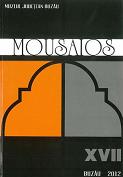Drumul Teleajenului si Drumul Buzăului. Noi repere geografice i istorice
Teleajen and Buzău ancient roads. Geography and history
Author(s): Alexandru Ionut Cruceru, Cezar ButerezSubject(s): Archaeology
Published by: Muzeul Judetean Buzău
Keywords: historical roads; Teleajen; Buzău; historical geography; Brașov; Carpathians
Summary/Abstract: Modern methods of spatial analysis, archive documents, old maps and the apparition of new studies sometimes impose additions designed to prove or disprove previous thesis. Despite the popularity enjoyed today, the hypothesis developed in the last century referring to the Teleajen and Buzău historical roads, does not adequately reflect our view of the relationships, social phenomena, and especially the true identity of the two routes. Through this article we want to draw a number of issues regarding the roads, to raise a number of questions and hypotheses and to guide the research in a more rewarding way than that practiced so far, of course, whether our view will justify this assumption. Because there are many factors that contribute to the emergence, evolution and disappearance of roads, the study of transport routes, especially those of old, is proving difficult. As we descend in the past, there are fewer documents, and those existing only capture fragments that often give place to many interpretations. In the reconstitution of the Teleajen and Buzău roads, we start by studying the landscape, seeking the optimal Transcarpathian routes (in distance and difficulty) for trade using carts. Second, we take account of archaeological discoveries, of economic, social and political factors involved in the movement of goods between Țara Românească and Transylvania throughout the Middle Ages, and the strategic-military ones which were imposed from time immemorial. The new view that we propose in this study is based on documents which were hardly used in previous research, and accounts of foreign travelers about the Romanian Countries, the chronic of Prejmer village and toponymic evidence systematically collected from the study area. The theory we formulate aims to provide an alternative and also to bring up the subject of older commercial and military communication ways of the Curvature Carpathians. We consider that Historical Geography, the branch of Human Geography which studies static and dynamic relationships between social phenomena and geographical space, to be the best approach in what we wish as a final goal to be the objective knowledge of the historical roads.
Journal: Mousaios
- Issue Year: 2012
- Issue No: 17
- Page Range: 249-275
- Page Count: 27
- Language: Romanian

